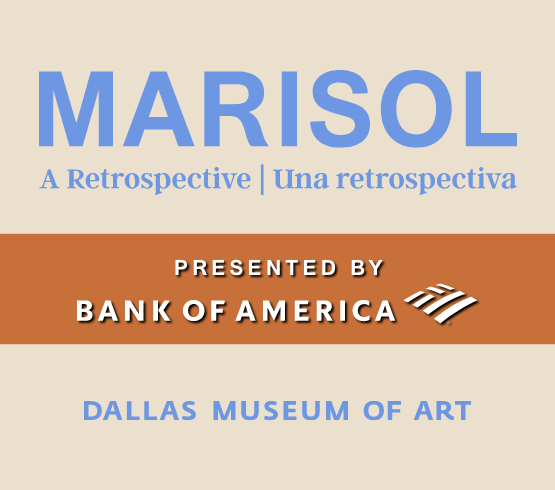Many readers will be familiar with Mark di Suvero and his work. In Texas, his sculpture Ave (1972-73) can be seen in front of the Dallas Museum of Art, across the street from the Nasher, and Ad Astra (2005) is in Dallas’s NorthPark Center. Clock Knot (2007) is part of the University of Texas at Austin Landmarks Collection, and additional works can be found in Houston. But he is perhaps most widely known, at least in the U.S., for establishing Socrates Sculpture Park in Queens, New York.
The renowned artist is nothing if not prolific, and I wonder if he ever dreamed he would come this far. He turns 90 this year and has been working as a professional artist since he graduated college in the late 1950s. Yet surprisingly, there are significant gaps in the public presentations of his work.
“I was shocked to find out that although he’s had a number of exhibitions throughout the United States over the course of his career, most of them involved large-scale sculptures that were presented outside of the museum, sometimes across the city, with smaller installations of his work inside the museum,” says Nasher Sculpture Center Chief Curator Jed Morse. “So there really hadn’t been a major survey of his work in the U.S. since his show at the Whitney in 1975.”
Around that time, Di Suvero shifted his practice from more Rodin-esque works (some of which are on view in Steel Like Paper) to abstract expressionist constructions made from what he salvaged in the city, such as massive timbers from old buildings in lower Manhattan, materials he hauled himself. His first big art world break came in 1960 by way of Green Gallery’s Richard Bellamy, who offered di Suvero his first major exhibition concurrent with the gallery’s debut. Early that year, the artist suffered a major accident that left him paralyzed from the waist down, so he turned to his friends and family for help. Hankchampion (1960), loaned by the Whitney to the Nasher for Steel Like Paper, was named after his brother.
And that 1975 show at the Whitney that Morse references? It earned di Suvero the now arguably infamous review by Sidney Geist, a Brancusi scholar, art critic, and fellow sculptor who wrote in part, “From now on nothing will be the same.” Ab Ex was moving forward, with di Suvero at the helm.
Morse’s first opportunity to work with the artist came with the installation of Proverb behind the Meyerson Symphony Center, a loan by the artist that the Nasher facilitated, in October 2002. For Steel Like Paper, Morse decided to consider di Suvero’s practice through a new lens.

1 ⁄5
Installation view
Mark di Suvero: Steel Like Paper
Nasher Sculpture Center, Dallas January 28 - August 27, 2023
Photo: Kevin Todora, courtesy Nasher Sculpture Center
Art © Mark di Suvero

2 ⁄5
Installation view
Mark di Suvero: Steel Like Paper
Nasher Sculpture Center, Dallas January 28 - August 27, 2023
Photo: Kevin Todora, courtesy Nasher Sculpture Center
Art © Mark di Suvero

3 ⁄5
Installation view
Mark di Suvero: Steel Like Paper
Nasher Sculpture Center, Dallas January 28 - August 27, 2023
Photo: Kevin Todora, courtesy Nasher Sculpture Center
Art © Mark di Suvero

4 ⁄5
Installation view
Mark di Suvero: Steel Like Paper
Nasher Sculpture Center, Dallas January 28 - August 27, 2023
Photo: Kevin Todora, courtesy Nasher Sculpture Center
Art © Mark di Suvero

5 ⁄5
Installation view
Mark di Suvero: Steel Like Paper
Nasher Sculpture Center, Dallas January 28 - August 27, 2023
Photo: Kevin Todora, courtesy Nasher Sculpture Center
Art © Mark di Suvero
In addition to sculptures such as Eviva Amore (2001), a 27-foot steel I-beam construction sited in the Nasher’s garden, Steel Like Paper includes a selection of di Suvero’s phosphorescent abstract paintings and gestural drawings. Even in these works, movement hovers somewhere between a state of being and a constant dream. Whether two- or three-dimensional, each of the works embodies a sense of energy, tension, and possibility.
“How he dreams about what he wants to make is most often through his drawings, which also aren’t shown very often,” says Morse.
In addition to works animated by docents, says Morse, “We have a big, sculptural swing in our entrance where visitors experience what it’s like to be rendered weightless by the sculpture, and get a full sense of what is essential in his work.”
To have such a personal experience with art? Dreamy indeed.
—NANCY ZASTUDIL





